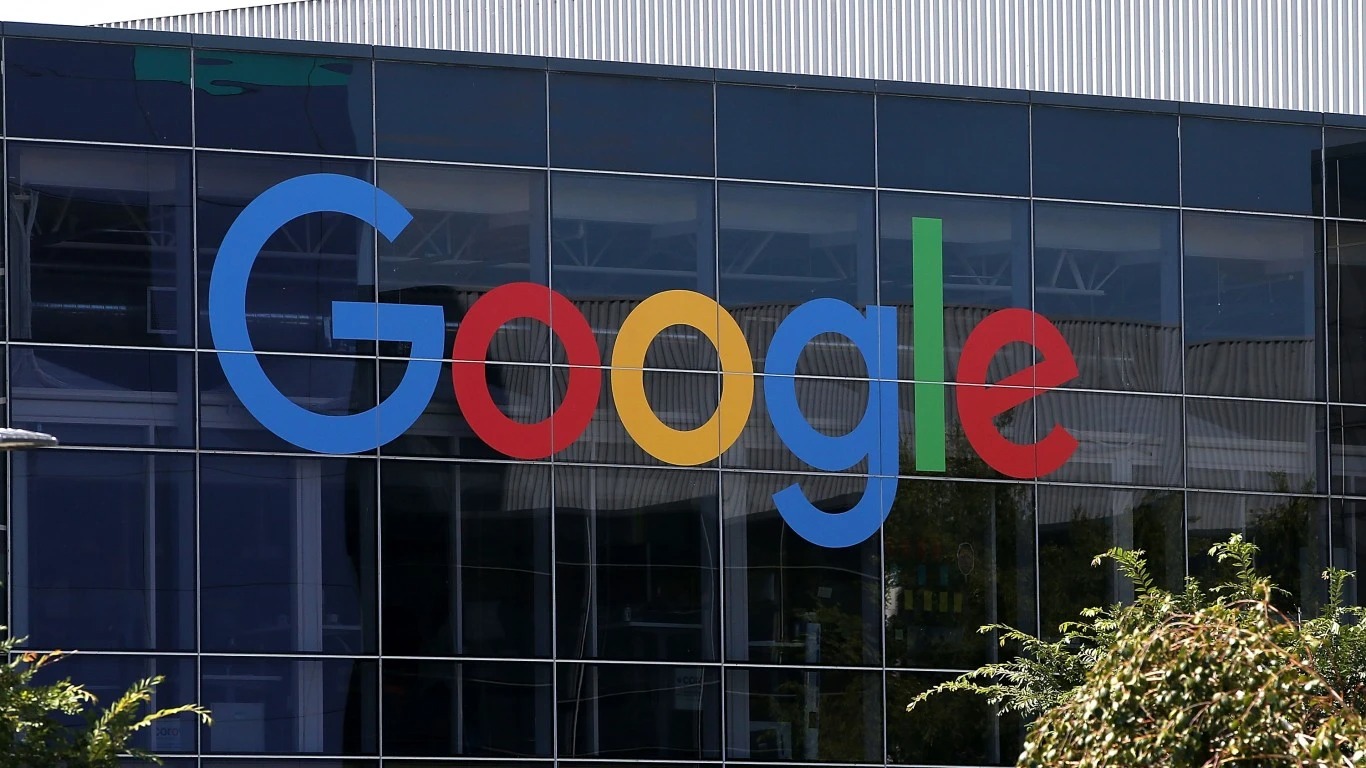
No notable earnings reports were released Friday afternoon or Monday morning. By the end of this week, there will be plenty to mull over. Two trillion-dollar+ tech giants will report results on Tuesday, and the nation’s two supermajor oil and gas companies will have plenty to talk about on Friday.
Speaking of oil, Monday morning’s big news is Chevron’s $53 billion all-stock acquisition of Hess. Take a look at what Chevron gets.
Before markets open on Tuesday, 3M, Cleveland-Cliffs, Halliburton and RTX will report quarterly earnings. ADM, Coca-Cola and Verizon will also post their earnings reports early Tuesday.
Here is a look at five earnings reports on the calendar for later on Tuesday.
Alphabet
The parent of Google, Alphabet Inc. (NASDAQ: GOOGL), is the first (alphabetically speaking) of the five big tech stocks to report September quarter earnings. The good news for investors is that the stock has added nearly 54% to its share price so far in 2023. Over the past month, however, the stock is up just 1.4%. The company is about to join Apple as the second member of the $100 billion operating cash flow club. Free cash flow for the past 12 months totals $71.1 billion. What’s for sale? (These companies have the best reputations.)
Of 52 posted ratings, 44 are Buy or Strong Buy. The rest are Hold ratings. At a recent price of around $135.00 a share, the upside potential based on a median price target of $153.50 is 13.6%. At the high price target of $200.00, the upside potential is 48.1%.
Third-quarter revenue is forecast at $75.78 billion, which would be up 1.6% sequentially and by 9.7% year over year. Adjusted EPS are pegged at $1.45, up 0.5% sequentially and 36.8% higher year over year. For the full 2023 fiscal year, consensus estimates call for EPS of $5.64, up 23.7%, on revenue of $304.39 billion, up 7.6%.
Alphabet stock trades at 24.1 times expected 2023 EPS, 20.4 times estimated 2024 earnings of $6.68 and 17.4 times estimated 2025 earnings of $7.83 per share. The 52-week trading range is $83.34 to $141.22. The high was posted less than two weeks ago. Alphabet does not pay a dividend, and the total shareholder return for the past 12 months was 35.64%.
Microsoft
Over the past 12 months, shares of Microsoft Corp. (NASDAQ: MSFT) have added 38.3% to their price, including a gain of more than 36% so far in 2023. For the company’s September quarter, analysts are waiting to hear how its massive investment in AI is affecting growth in the cloud computing business. For the 2023 fiscal year ending in June, Microsoft reported $28.5 billion in cloud revenue, a third more than second-place Amazon. AI hype is yesterday’s news; now Microsoft needs to begin delivering results. (These companies control over half of their industry.)
Sentiment for the stock is virtually all positive. Of 54 analysts covering the stock, 48 have a Buy or Strong Buy rating, and six more rate it at Hold. At the share price of around $327.00, the potential upside based on a median price target of $400.00 is about 22.3%. At the high target of $440.00, the implied gain is 34.6%.
For its first quarter of fiscal 2024, revenue at the Dow Jones industrial average component is forecast at $54.54 billion, down 2.9% sequentially but up 8.8% year over year. Adjusted EPS are forecast at $2.65, down 1.5% sequentially and up 12.8% year over year. For the 2024 fiscal year ending next June, consensus estimates call for EPS of $11.09, up 13.1%, on revenue of $236.82 billion, up 11.8%.
Microsoft stock trades at 29.5 times expected 2024 EPS, 25.8 times estimated 2025 earnings of $12.68 and 22.1 times estimated 2026 earnings of $14.79 per share. The 52-week trading range is $213.43 to $366.78. Microsoft pays an annual dividend of $2.72 (yield of 0.92%). Total shareholder return over the past year was 39.67%.
Snap
Like most tech stocks, shares of Snap Inc. (NYSE: SNAP) have gotten a lift since the beginning of the year, but its 12-month performance continues to lag. The stock is up about 5.5% so far in 2023 but down by 12.5% over the past 12 months.
Analysts’ average price target on the stock has dropped from nearly $87.00 in October 2021 to just $9.95. The 12-month average EPS estimate has declined from $0.08 to a loss of $0.08 per share. Snap’s stock is heavily traded, with more than 26 million shares changing hands every day. Short interest in the stock is around 8% of the float, nowhere near the 50% short interest in Novavax.
A total of 40 brokerages cover Snap stock. Analysts are cautious, with 30 having a Hold rating. Just four have a Buy or Strong Buy rating. At a share price of around $9.50, the implied upside based on a median price target of $9.90 is 4.2%. At the high price target of $16.00, the upside potential is 68.4%.
Third-quarter revenue is forecast at $1.11 billion, up 3.9% sequentially but down 1.8% year over year. Analysts are looking for an adjusted loss per share of $0.05, worse than the $0.02 loss per share in the prior quarter and far worse than year-ago EPS of $0.08. For the full 2023 fiscal year, consensus estimates call for EPS of $0.01, down from $0.17, on sales of $4.5 billion, down 2.2%.
Snap stock trades at 92.3 times estimated 2024 earnings of $0.10 and 29 times estimated 2025 earnings of $0.33 per share. The 52-week range is $7.33 to $13.89. Snap does not pay a dividend, and total shareholder return for the past year was negative 12.51%.
Texas Instruments
Chipmaker Texas Instruments Inc.(NASDAQ: TXN) has dropped 3.8% from its share price over the past 12 months. The stock is down nearly 18% for the past three months, due in large part to a downbeat prediction on sales and earnings when it released second-quarter results in July. Cash flow from operations totaled $1.4 billion in the second quarter, but free cash flow finished $47 million in the red. That is the first time in nearly 20 years that free cash flow was negative.
TI has begun selling directly to customers, cutting out the distribution channel. The chipmaker is also investing more in order to increase its capacity. Investors will want to hear positive news on both fronts.
Analysts are cautious on the company’s prospects. Of 34 brokerages covering the stock, 20 have a Hold rating and another 10 have a Buy or Strong Buy rating. There are also four Sell or Strong Sell ratings mixed in. At a share price of around $148.00, the implied gain based on a median price target of $178.21 is about 21%. At the high price target of $230.00, the upside potential is 55.4%.
For the company’s third quarter, analysts anticipate revenue of $4.59 billion, up 1.3% sequentially but down 12.4% year over year. Adjusted EPS are forecast to total $1.85, down 1.1% sequentially and by 27.7% year over year. For the full 2023 fiscal year, EPS are forecast to fall 23.5% to $7.41, and revenue is expected to decrease by 10.1% to $18.01 billion.
The stock trades at around 19.9 times expected 2023 EPS, 28.3 times estimated 2024 earnings of $8.08 and 16.5 times estimated 2025 earnings of $8.96 per share. Its 52-week range is $146.71 to $188.12. The company pays an annual dividend of $5.20 (yield of 3.52%). Total shareholder return for the past year was negative 0.94%.
Visa
The second Dow component reporting after markets close Tuesday is credit card issuer Visa Inc. (NYSE: V). Over the past 12 months, the stock price is up by nearly 25%, including a boost of more than 12% so far in 2023.
The big concern, of course, is the macroeconomy and U.S. consumer spending. Inflation has cooled, but prices remain at their elevated levels. Wage growth has stalled as well. Visa has beaten Wall Street earnings estimates for 14 consecutive quarters. That sloshing sound of cash we have all heard for the past couple of years has barely left an echo. What did Visa hear, and what does it expect to hear in the months ahead?
Analysts are solidly bullish on the stock, with 31 of 38 brokerages rating it at Buy or Strong Buy. The others have Hold ratings. At the share price of around $233.00, the implied gain based on a median price target of $275.00 is about 18%. At the high price target of $325.00, the upside potential is 39.5%.
For Visa’s fourth quarter of fiscal 2023, analysts forecast revenue at $8.55 billion. That would be up 5.3% sequentially and up 9.8% year over year. The forecast for adjusted calls for EPS of $2.24, up 3.9% sequentially and up 16.1% year over year. For the 2023 fiscal year that ended in September, consensus estimates call for EPS of $8.67, up 15.6%, on revenue of $32.61 billion, up 11.2%.
Visa stock trades at 26.8 times expected 2023 EPS, 23.6 times estimated 2024 earnings of $9.82 and 20.7 times estimated 2025 earnings of $11.21 per share. The 52-week trading range is $189.10 to $250.06. Visa pays an annual dividend of $1.80 (yield of 0.77%). Total shareholder return for the past 12 months was 24.82%.
Originally published at 24/7 Wall St.
Sponsored: Find a Qualified Financial Advisor
Finding a qualified financial advisor doesn’t have to be hard. SmartAsset’s free tool matches you with up to 3 fiduciary financial advisors in your area in 5 minutes. Each advisor has been vetted by SmartAsset and is held to a fiduciary standard to act in your best interests. If you’re ready to be matched with local advisors that can help you achieve your financial goals, get started now.






